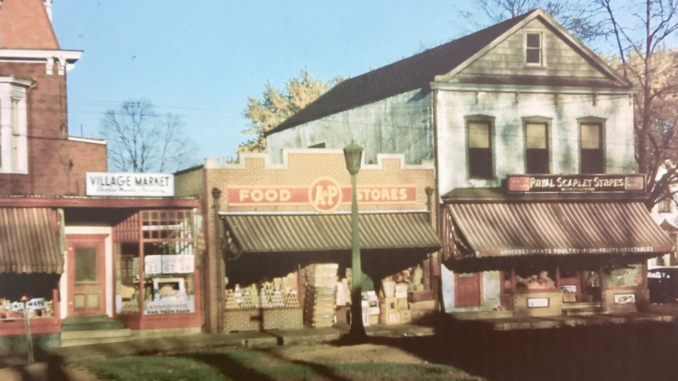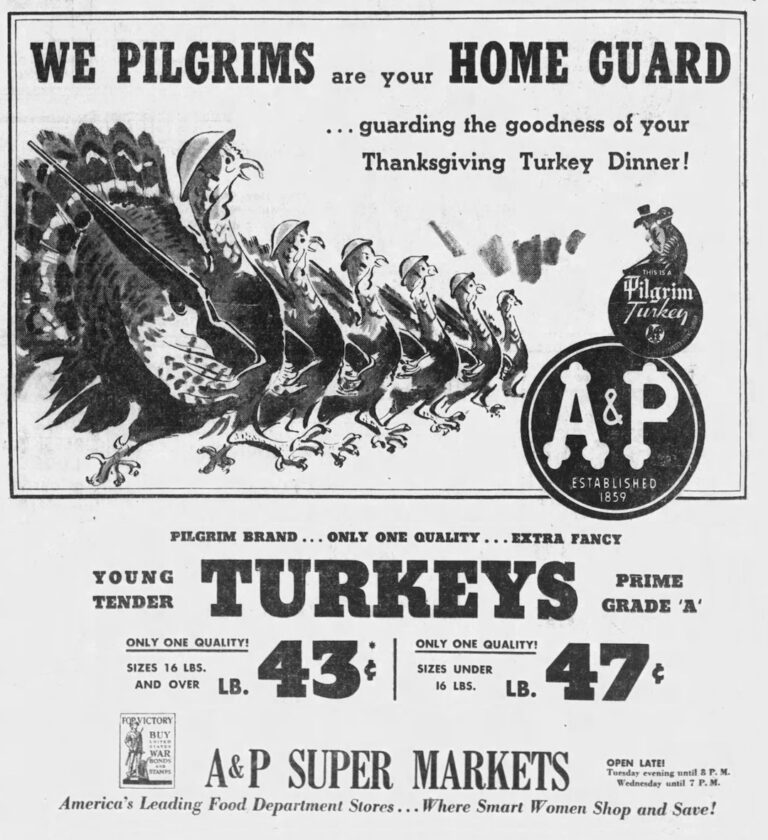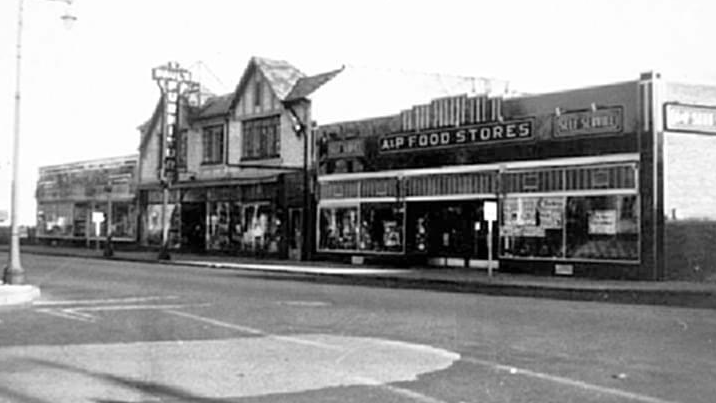
PASCACK VALLEY—This week we turn back 80 years, to 1942, to when A&P published this advertisement a few days before Thanksgiving.
The Pascack Valley had a couple of A&P locations at the time. A smaller one was in the strip of stores on Hawthorne Avenue in Park Ridge, and this later became P&A Auto Parts. The larger store was in downtown Westwood, at the corner of Westwood and Fairview avenues.
By November 1942, the United States had been almost a year at war. After the Japanese bombed Pearl Harbor on Dec. 7, 1941, American life had changed drastically. Millions of our boys shipped overseas to battle in Europe and the Pacific. Thousands of miles from the front lines the war permeated every aspect of life on the home front.
Almost overnight the American economy shifted from consumer goods to war production. The final vestiges of the Great Depression faded away as the need for labor skyrocketed, and millions of women left home for the first time to take jobs in factories. The term “Rosie the Riveter” had just been coined in a song and it would become a lasting symbol of patriotic womanhood. Across the Pascack Valley, people were volunteering as USO hostesses, Red Cross workers, and in civilian defense, training as air raid wardens, firefighters, and auxiliary police. By the middle of 1942 over 10 million Americans were civil defense volunteers.

To ensure adequate supplies for our armed forces, rationing became a part of everyday life starting in the spring of 1942. While there was more money to spend because of the booming economy, there was less to buy. Each person received a ration book with tickets that had to be traded in to buy certain types of groceries. This was to ensure each person got only their fair share of items and to prevent shortages.
When Thanksgiving 1942 came around, it was still the early days of rationing. The only food item rationed at the time was sugar. Newspapers offered recipes that used molasses, cane syrup, honey, raisins, and fruits as sweeteners. Coffee rationing started Nov. 29, 1942, just three days after Thanksgiving. Americans were limited to a pound of coffee every five weeks, amounting to less than a cup a day (food for thought the next time you are waiting in line at Dunkin’ or Starbucks!).
In the following year, other foods such as meat, butter, cheese, cooking oils, processed foods, dried fruits, and jams would also be rationed.

People planted victory gardens to grow their own fruits and vegetables, and they canned them at home to preserve them. Victory cookbooks gave wives hints about how to do more with less in the kitchen. At the time, grocery shopping and cooking were primarily jobs for women. (Note at the bottom of the advertisement, “Where smart women shop and save!”)
One item that was not rationed was poultry. Turkeys were readily available, although they came at a higher price, nearly double the cost before the war. Our A&P advertisement shows turkeys averaging 45 cents a pound. While that seems like a great deal from our modern perspective, it really wasn’t. Due to inflation, 45 cents in 1942 had the same buying power as $8.23 today.
— Kristin Beuscher, a former editor of Pascack Press, is president of the Pascack Historical Society
